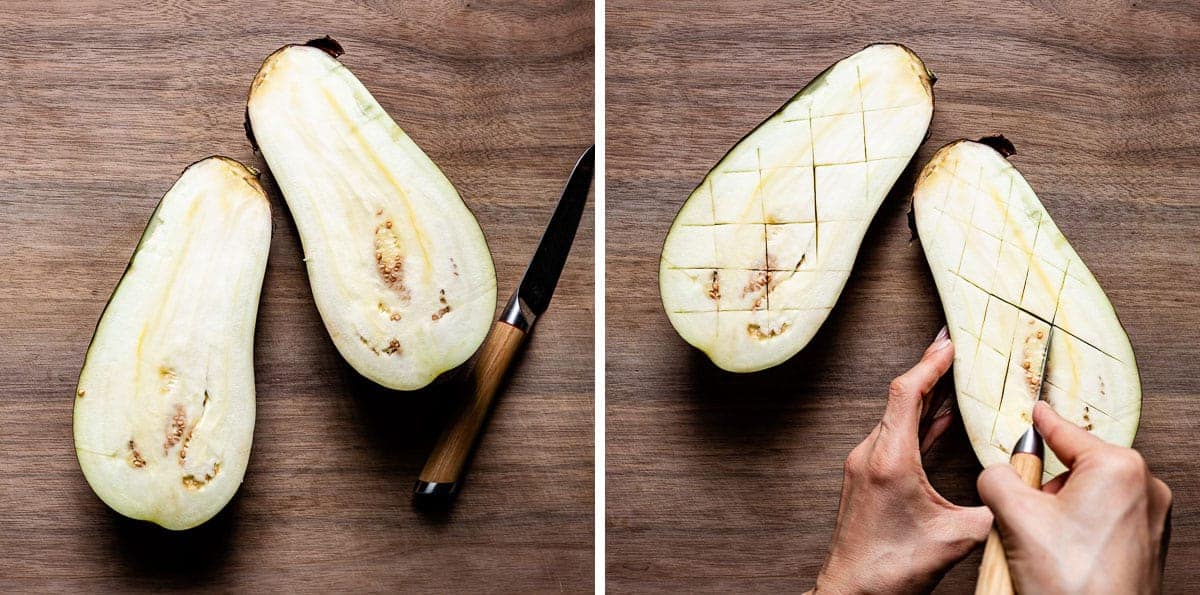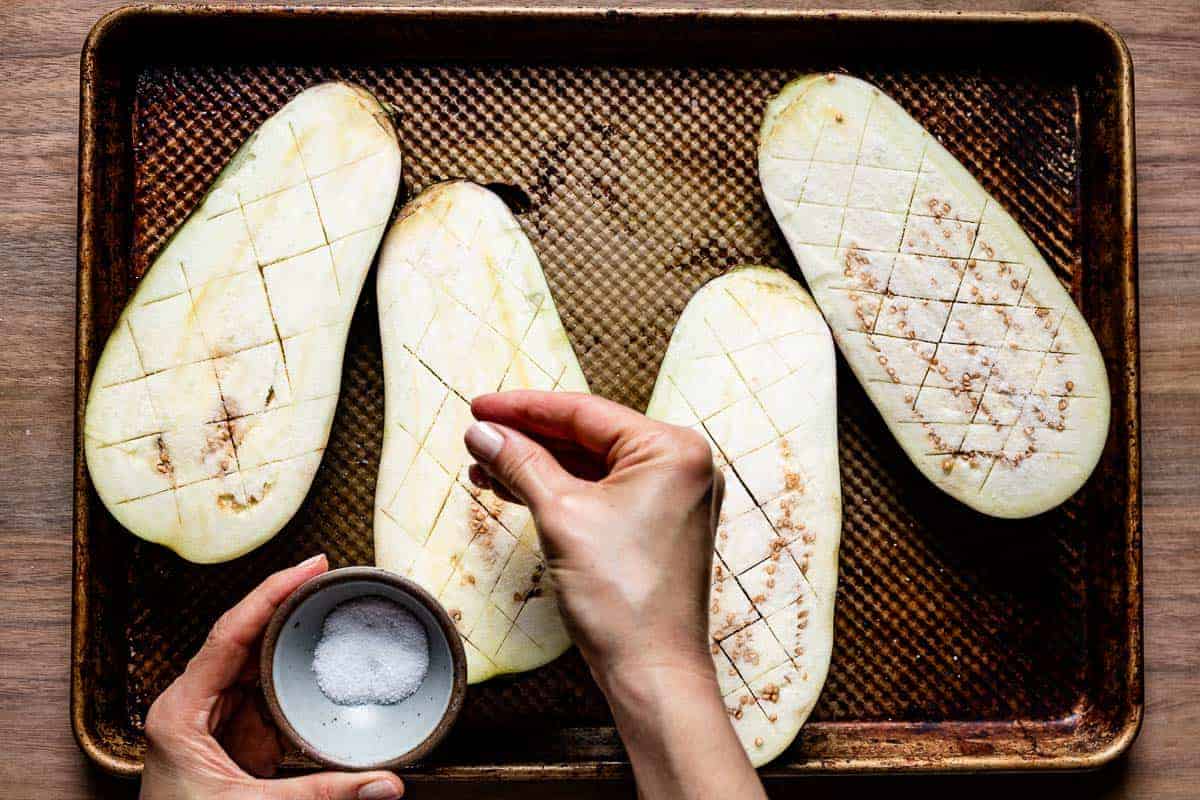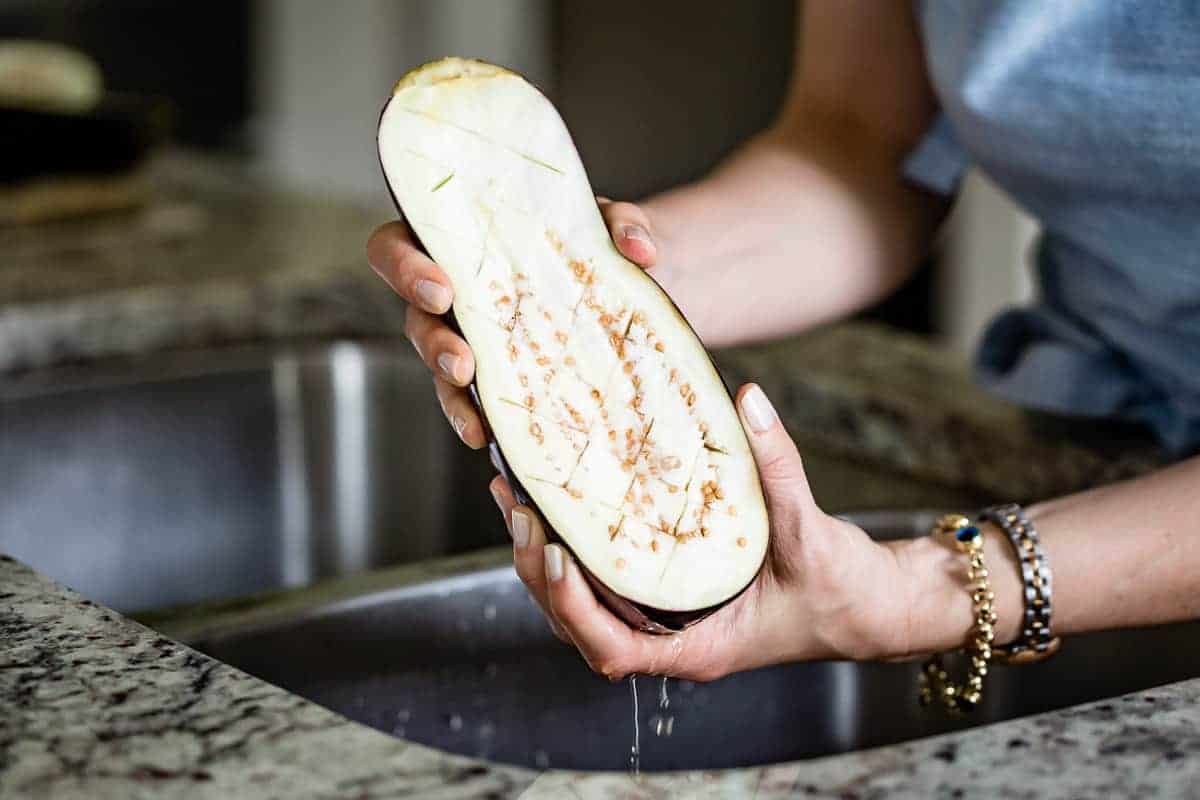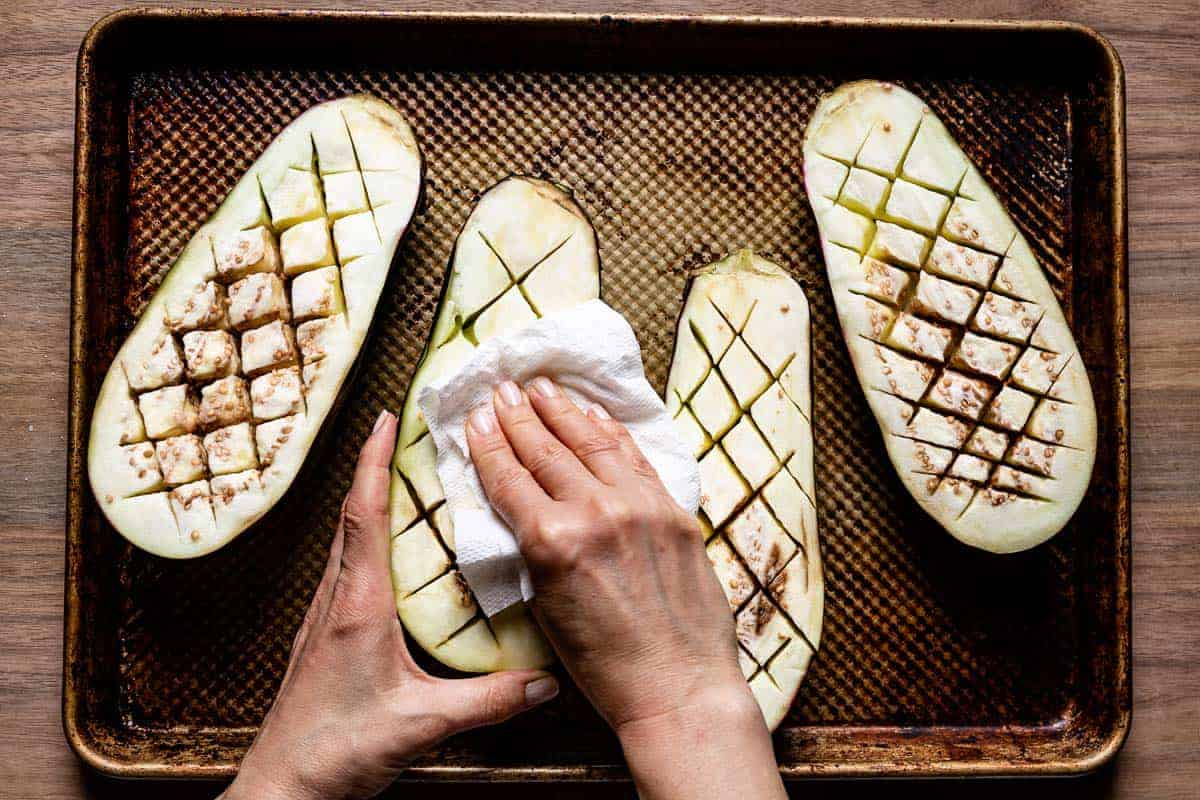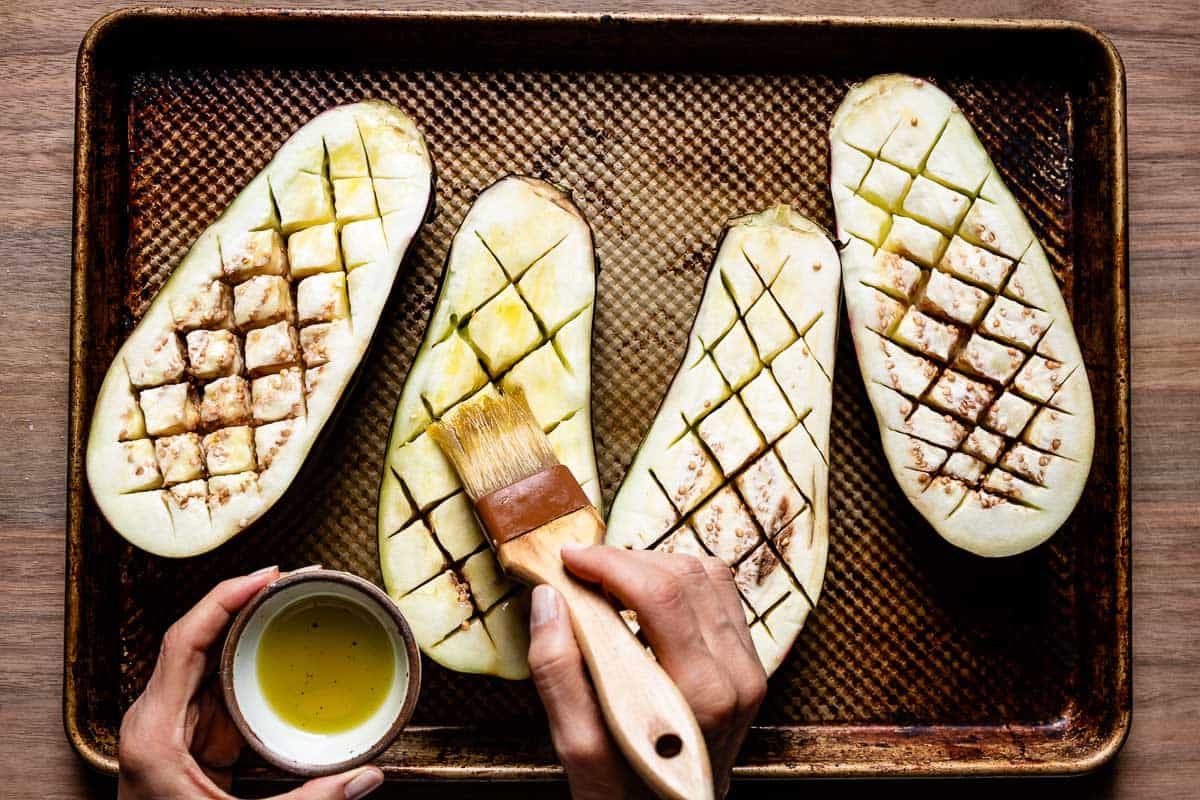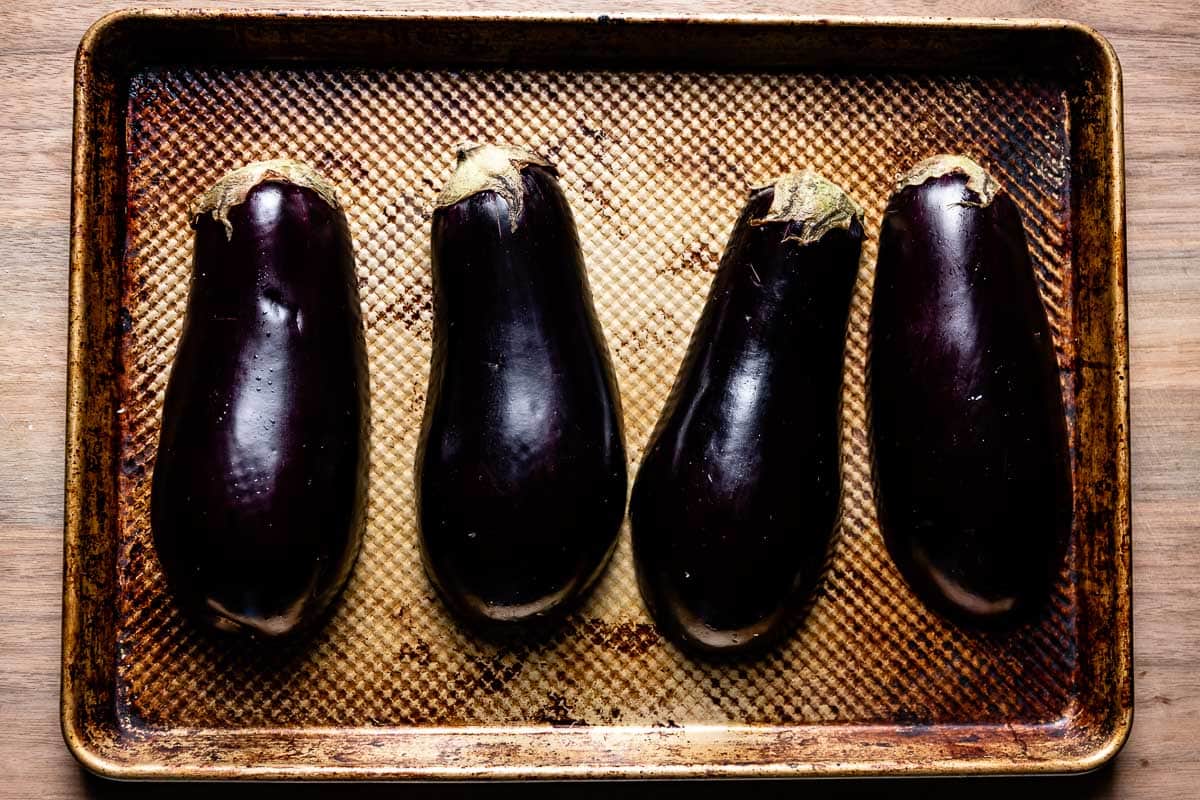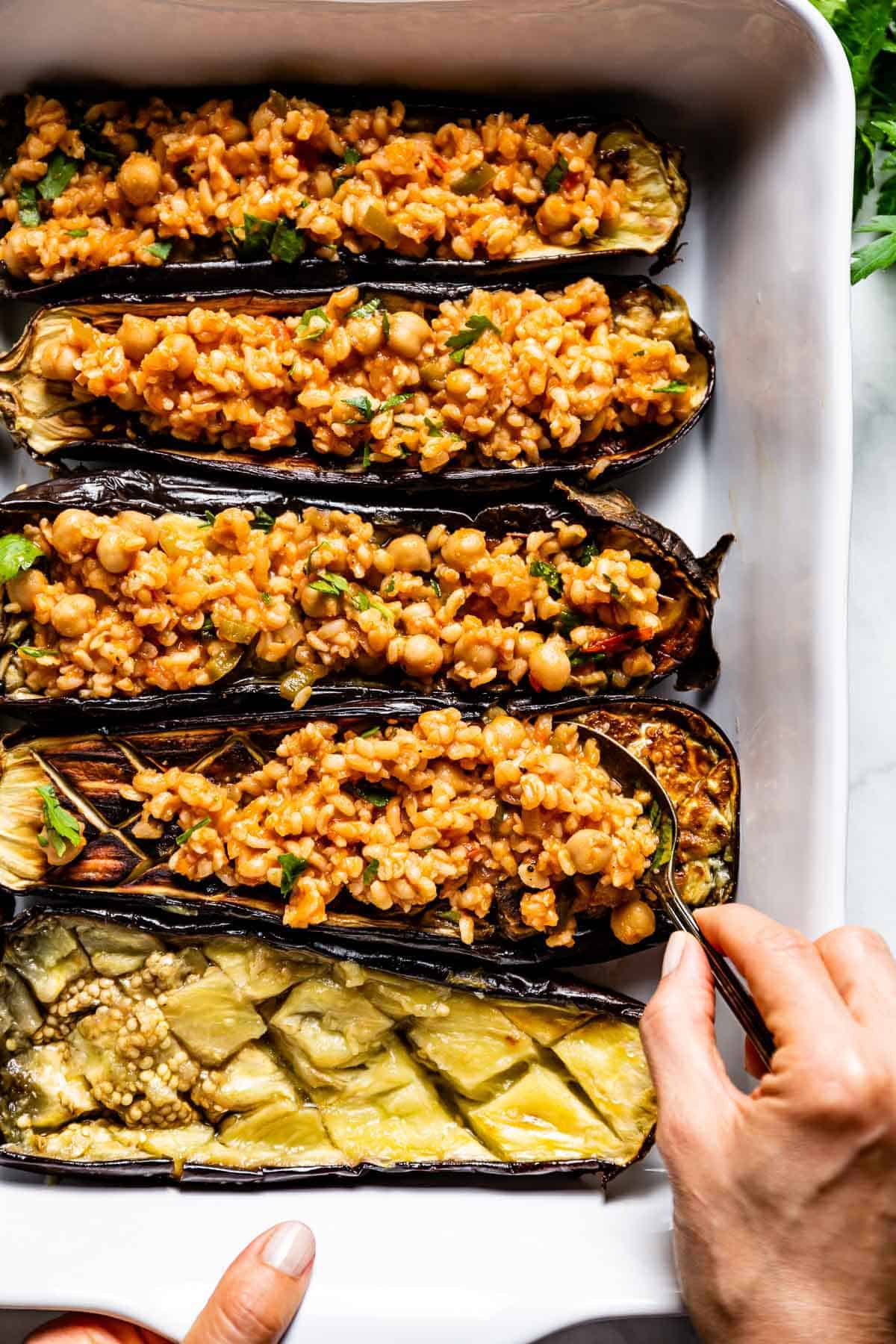There’s no question why creamy, caramelized eggplant halves make the perfect base for some of my favorite Middle Eastern recipes. And if you’re on the hunt for basic and easy-baked eggplant recipes, you’ll love learning how to make Whole Roasted Eggplant, Sauteed Eggplant, and Fire Roasted Eggplant, too! If you’re just starting to learn what to do with aubergine (what they call eggplant in the U.K.), it’s important to know what to expect. Take the guesswork out of cooking with this easy guide.
Easy and hands-off, this cooking method beats all others in terms of how simple it is. This method eliminates the bitter taste found in other roasted eggplant recipes—even when eggplants are out of season!—because of its unique pre-salting technique. Make quick, healthy, and satisfying dinners any night of the week by stuffing your low carb baked eggplant halves with anything from bulgur wheat pilaf to ground beef.
Globe Eggplants
For this recipe, I prefer to use globe eggplants which are a type of round, large eggplant (the ones you see in the photos.) Not only are they more widely available in the U.S., but they’re also large enough that each of your oven-grilled eggplant halves can serve as a perfect single-portion meal. If you can get your hands on it, its close cousin, Italian eggplants, would also work for this recipe.
Graffiti Eggplant
Graffiti eggplants are usually the smaller, teardrop-shaped version of eggplant. Though you can certainly use this type of eggplant to make oven-roasted eggplant halves, keep in mind that small eggplants cook more quickly and will yield smaller portion sizes.
Lining the Sheet Pan: Using a lined baking sheet cuts clean-up time in half. However, using an unlined sheet pan can reduce eggplant baking time by increasing contact between the eggplant halves and the hot metal. Salting the Eggplants: It’s important not to skip salting your eggplant halves. Because eggplants have so much water in them, salt is the best way to draw out the extra moisture so that the eggplants don’t absorb all the oil used to roast their outer layers. Removing the Salt: Because this recipe uses such a small amount of salt, you don’t have to worry about removing the seasoning once the moisture has been drawn out of the eggplant halves. However, if you prefer, you may rinse the salt off the eggplant halves after waiting a full 30 minutes. Just be sure to dry the eggplant halves with a paper towel afterward.
Scoop out the eggplant flesh to make a party-ready dip, like my bold and smoky Eggplant Yogurt or baba ganoush. Stuff your roasted eggplant halves with bulgur wheat pilaf to make Mediterranean Stuffed Eggplant, or you can use my Seasoned Quinoa to add a gluten-free, zesty, herby, and flavorful twist. Make a meal meat-lovers can’t resist by filling each eggplant half with ground beef, ground chicken, or even ground lamb! Drizzle your roasted halves with lemon juice, olive oil, salt, and black pepper for a delicious side dish or snack. You can even take it to the next level by presenting the halves atop a bed of fresh thyme sprigs for a light, herby taste. Eat them with your favorite vinaigrette for a light yet filling eggplant salad. Tangy and sharp Lemon Vinaigrette and Lemon Balsamic Vinaigrette make a great addition to this easy eggplant recipe.
Storage: Though they’re better fresh, eggplant halves can be stored in the fridge in an airtight container for up to four days. Remember to bring them to room temperature before storing them. To reheat, place the eggplant halves in a 300-degree F. preheated oven for 8-10 minutes. Freezing: Because eggplant halves tend to lose their shape when exposed to cold temperatures, I don’t recommend freezing them.Instead, you can freeze the flesh. To do so, scoop out the flesh, place it in a bowl lined with a colander, wait for it to drain out all of its juices, and place it in an airtight container.


